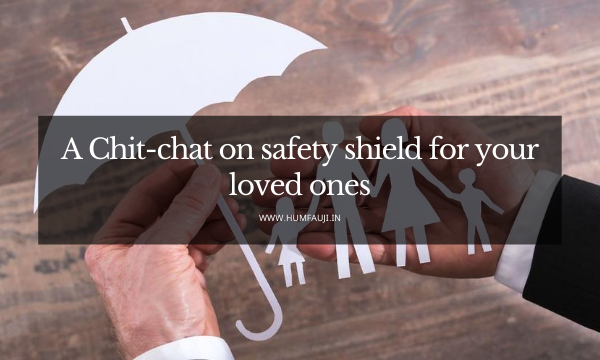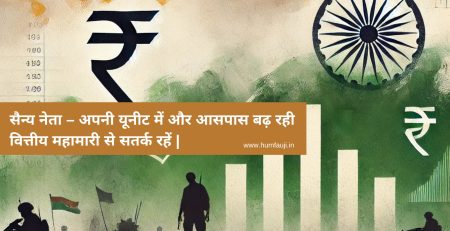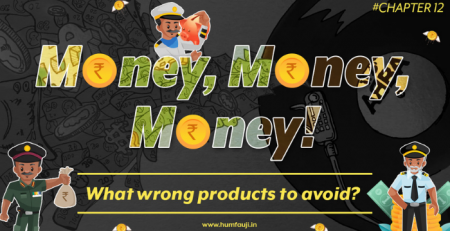Being part of the armed forces often means having to bear a higher degree of life-risk than others. This is also something that comes up in our financial planning discussions quite often with serving officers. While there are insurance provisions under the Army/Navy/Air Force Group Insurance Funds (AGIF/NGIS/AFGIS), it is but natural for all to think about having their own safety net too. Also, is the cover provided by these Govt agencies adequate in this hyper-inflation era? May not be so.
Typically, one will buy an ‘insurance’ from someone in their own hometown or community circles and then the word spreads fast in the peer group. Now everyone is thinking of getting the same ‘policy’!
Someone from that peer group gets in touch with us to discuss the pros and cons. Here is how the conversation goes.
I’m getting Guaranteed returns!
This is something that all of them are hooked on to. A junior Officer with limited personal responsibilities at his age, was considering paying Rs 30,000 per month (☹!) for this ‘insurance policy’ for a period of 10 years. That is quite some money given out every month!
The ‘hook’ was that the insurance company is guaranteeing that he will start getting a regular income from the policy from 15th year onwards till the end of 20th year and the total amount paid to him will be around Rs 67 lakhs these years.
But what about insurance, we ask? Weren’t we talking about insurance in the first place?
Yes, there is ‘also’ a life insurance of around Rs 37 lakh which is assured in case of mortality of the policyholder.
What do we say to it?
We listen to these promises of the agents often. And then tell them that they are not gaining much or what they actually deserve, in this entire scheme.
Prompt comes the reply that the invested money is getting doubled. Then we need to explain that even if it is getting doubled, it is happening over a period of 20 years, which turns out to be a return of about 4.32% per annum, and this doesn’t even come close to several other safe investments done for such a long period of time.
The interesting part is yet to come though.
Despite keeping that much money with the insurance company for such a long period of time, the actual life insurance amount is almost equal to your originally invested amount. And after the policy period is over? You are again left without this insurance at the age of 50 years.
Let’s do some useful calculations
As the primary discussion was regarding insurance, we then do some reverse calculation of how much should that officer be paying for that actual insurance of Rs 37 Lakhs in question.
Many of them are surprised when inform them that they can get the same insurance cover, that too till 60 years of age, for as little as Rs 4000-5000 a year. Yes, just above 1% of what they actually planned to invest in a year.
How? We will get to that in a bit.
Just one important point we need to highlight. That Rs 30,000 a month investment is a good commitment – just that it needs proper planning and appropriate execution. The one that was being explored was not the right one.
Coming back to insurance. How to get that cheap insurance?
The simplest insurance product will do the trick!
This is the simplest and in fact, the purest form of life insurance. You pay some money as a premium and the insurance company, in return, assures that a fixed amount will be paid to your nominees in case of your untimely demise. Just that you pay the premium and forget about it, in other words you do not get the money back. There are some policies that offer a return of premium even in term insurance, but then the premium is not as low and again defeats the purpose of ‘insurance’.
Taking more realistic aspirations and family goals, a Term Insurance policy assuring your nominees of Rs 2 crores in case of an eventuality, costs only around Rs 15,000 a year at the age of 30 years. The caveat here is that this is for a person buying this policy at a young age. But even at an increased age, premium of such policies remains very reasonable. Why? Because the agent commissions are very low and this is no fancy product.
The premium then remains constant throughout the policy term. If the same policy is bought by someone at, say, age 35, the premium could go up to just around Rs 25,000 a year. So, the key is getting this early on in your career.
In case of any eventuality, this money can be used by your nominees and loved ones for any purpose. Be it for repaying existing loans like a home loan or retirement of the spouse or higher education of children. It can be anything.
A challenge
Being part of the defence fraternity comes with its own set of challenges. One such challenge is that if you buy a Term Plan when you are posted to a field area, it is likely that the insurance company could deny you the policy or load some extra premium on it. This is due to the higher risk your life could face in those situations. So, the trick is to take it when you are in a peace area – this is all within rules.
Discuss with your financial planner about all the factors you should take into account to arrive at an ideal term insurance amount and tenure for you.
We hope this post acts as food for thought to make you think in the right direction, and prevent you from going for ‘too good to be true’ promises.














Leave a Reply